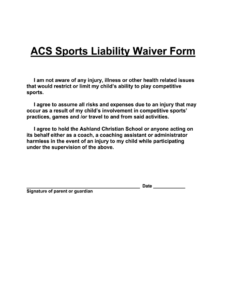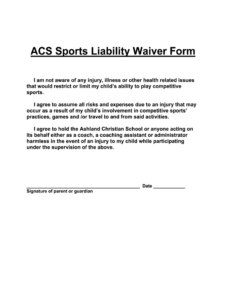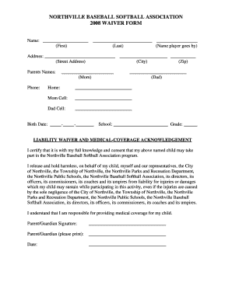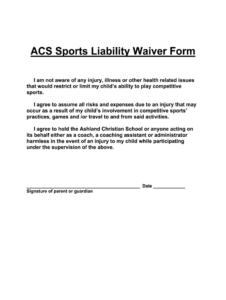Utilizing such a document offers significant protection for sports organizations, coaches, and volunteers. It clarifies the understood dangers of the sport, establishes a documented agreement of assumed risk, and can mitigate potential legal disputes arising from injuries. This proactive measure contributes to a safer environment for all involved by ensuring informed participation and managing expectations.
Further exploration will cover essential components of these agreements, legal considerations, best practices for implementation, and available resources for acquiring suitable templates.
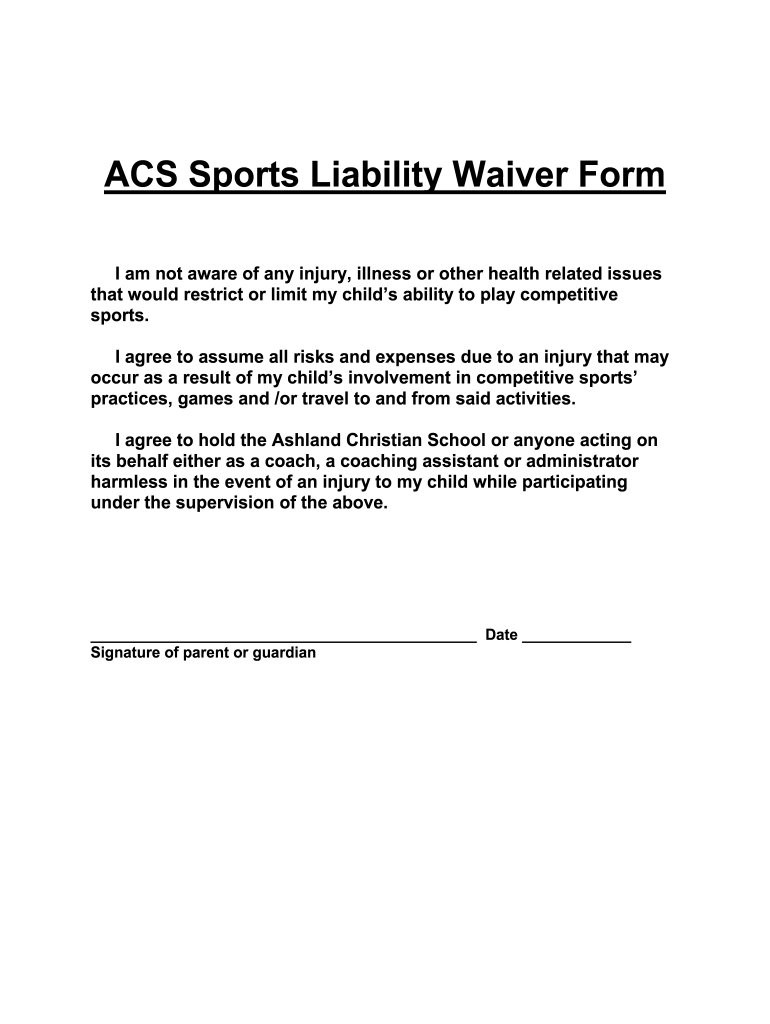
Key Components of a Youth Sports Waiver Form
Effective waivers contain specific elements to ensure clarity and enforceability. These components work together to protect all parties involved.
1. Participant Information: Clear identification of the minor athlete, including full name, date of birth, address, and contact information.
2. Parent/Guardian Information: Full legal name, signature, and contact information of the parent or legal guardian granting consent.
3. Activity Description: Specific details about the sport or activity, including the organization’s name, the duration of participation, and the location of practices and events.
4. Risk Acknowledgment: Explicit statement outlining the inherent risks and potential hazards associated with the sport, including the possibility of serious injury.
5. Liability Release: A clear and unambiguous statement releasing the organization, coaches, volunteers, and other associated parties from liability for injuries sustained during participation, except in cases of gross negligence or willful misconduct.
6. Medical Information: A section for disclosing any pre-existing medical conditions, allergies, or medications that might affect the minor’s participation.
7. Emergency Contact Information: Designated individuals to be contacted in case of an emergency during the activities.
8. Severability Clause: Specifies that if any part of the waiver is deemed invalid, the remaining portions remain in effect.
Careful consideration of these components ensures a comprehensive and legally sound agreement that protects all parties involved in youth sports activities. A well-drafted document fosters transparency and promotes a safe and responsible environment for young athletes.
How to Create a Youth Sports Waiver Form
Creating a robust waiver necessitates careful attention to legal requirements and specific information. A well-drafted document provides crucial protection for all parties involved.
1. Consult Legal Counsel: Seek professional legal advice to ensure compliance with local and state regulations. Legal counsel can provide guidance on specific language and clauses required for enforceability.
2. Clearly Identify Parties: Specify the full legal names and contact details of the participating minor, parent/guardian, and the sports organization.
3. Detail Activity and Risks: Provide a comprehensive description of the sport/activity, including inherent risks and potential hazards. Use clear and unambiguous language to ensure comprehension.
4. Incorporate a Release of Liability: Include a section where parents/guardians acknowledge the risks and agree to release the organization and its representatives from liability for injuries sustained during ordinary participation.
5. Include Medical Information and Emergency Contacts: Designate space for relevant medical details, allergies, medications, and emergency contact information.
6. Add a Severability Clause: Include a clause stating that if any part of the waiver is deemed invalid, the remaining portions remain enforceable.
7. Obtain Signatures and Date: Ensure the document is signed and dated by the parent/guardian and a representative of the sports organization.
8. Retain Records: Maintain copies of signed waivers for future reference and potential legal proceedings.
A meticulously crafted waiver form constitutes a crucial element in risk management for youth sports organizations. Adherence to legal standards and inclusion of essential information safeguards participants and providers alike. Regular review and updates based on evolving legal landscapes further enhance the document’s effectiveness.
Careful development and implementation of standardized participant agreements represent a critical aspect of risk management within youth athletic programs. These documents serve to clarify liability, outline inherent dangers, and establish informed consent, fostering a safer environment for all stakeholders. Understanding key components, adhering to best practices, and seeking legal counsel ensures these agreements are comprehensive, enforceable, and contribute to a culture of responsibility.
Prioritizing comprehensive risk management strategies, including robust participant agreements, is paramount for youth sports organizations. This proactive approach not only safeguards the organization but also underscores a commitment to the well-being of young athletes. Continual review and adaptation of these documents in response to evolving legal and safety standards are essential for maintaining a secure and supportive environment for all participants.
